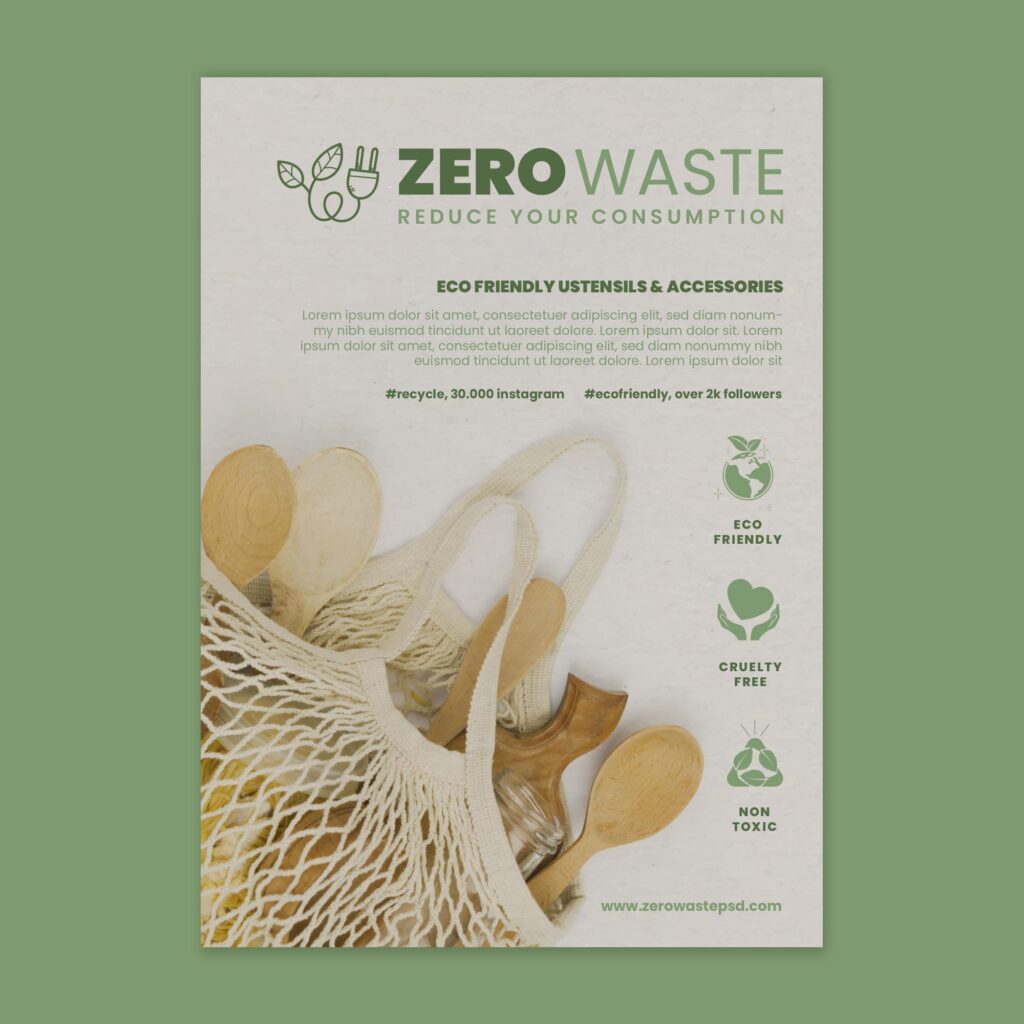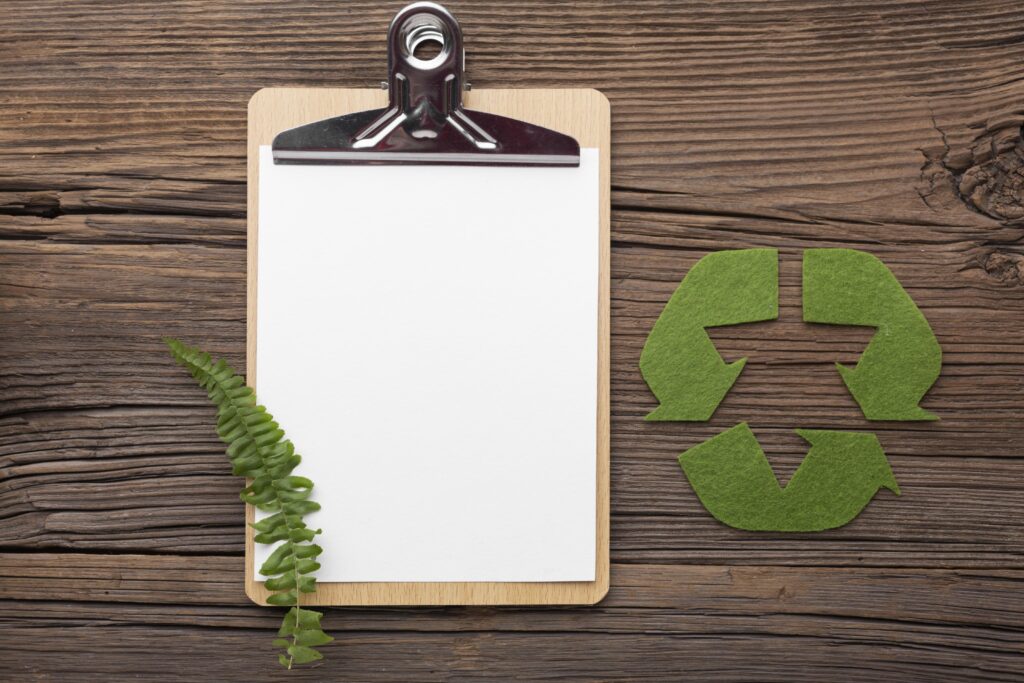
In our speedy world, where natural worries are at the very front, going with eco-accommodating decisions has become pivotal. One such decision is choosing eco-accommodating paper, a basic yet significant stage towards reasonable living. This article dives into the complexities of making eco-accommodating paper, revealing insight into its natural advantages, the creation cycle, and ways people can add to this green development.
Table of Contents : How to Make Eco-Friendly Paper
Introduction
In a general public wrestling with natural difficulties, understanding the significance of eco-accommodating practices is vital. As we explore through the subtleties of manageable living, one region that frequently slips by everyone’s notice is the paper business. Conventional paper creation has extensive ecological outcomes, adding to deforestation and leaving a significant carbon impression. Enter eco-accommodating paper — a progressive elective that tends to these worries as well as offers a large group of advantages for our planet.

Understanding Eco-Friendly Paper
Before we dive into the most common way of making eco-accommodating paper, how about we comprehend what separates it. Eco-accommodating paper, otherwise called supportable or reused paper, is made utilizing materials that insignificantly affect the climate. These materials frequently incorporate reused paper, farming deposits, and strands obtained from capably oversaw backwoods. By diminishing dependence on virgin wood mash, eco-accommodating paper creation helps ration regular assets and limits natural mischief.
Environmental Impact of Traditional Paper Production
The obvious truth of conventional paper creation includes far and wide deforestation and natural corruption. As woods are cleared to clear a path for paper factories, biodiversity endures, and carbon-retaining trees are lost. Eco-accommodating paper steps in as an answer for these issues, giving a practical elective that limits biological damage.

Benefits of Using Eco-Friendly Paper
The upsides of deciding on eco-accommodating paper are complex. Besides the fact that it decreases the interest for new unrefined components, yet it likewise adds to the decrease of fossil fuel byproducts related with customary paper fabricating. Besides, eco-accommodating paper is biodegradable and recyclable, lining up with a roundabout economy model.
Reduced Environmental Impact:
By using recycled materials and agricultural residues, you contribute to the conservation of forests and the reduction of waste.
Energy Savings:
Traditional paper-making processes often require more energy than eco-friendly alternatives. Choosing recycled materials and adopting DIY methods can significantly reduce energy consumption.
Promotion of Sustainable Practices:
Inspecting genuine instances of effective eco-accommodating paper execution gives unmistakable proof of the positive results related with feasible practices.
The Process of Making Eco-Friendly Paper – How to Make Eco-Friendly Paper
Making eco-accommodating paper includes a careful cycle that underscores supportability at each step. The unrefined components, the assembling system, and the eventual outcome are painstakingly considered to guarantee negligible natural effect. We should investigate the means associated with creating eco-accommodating paper.
Choosing the Right Materials
The most vital phase in making eco-accommodating paper is choosing the right materials. Decide on post-purchaser reused paper or agrarian deposits like straw, hemp, or bamboo. These materials not just diminish the interest for conventional wood mash yet in addition reuse squander, adding to a round economy.
Collection and Preparation of Raw Materials
Assuming that you’re utilizing post-shopper reused paper, begin by gathering disposed of paper items. Guarantee that the paper is liberated from toxins like plastic or metal. For those investigating agrarian buildups, the arrangement includes gathering and handling straw, hemp, or bamboo. This step essentially lessens the requirement for chopping down trees, protecting normal territories.
Breaking It Down
The gathered materials should be separated into strands. This cycle regularly includes destroying or pulping the paper and utilizing mechanical or substance means to separate the agrarian buildups. The objective is to get a stringy mash that will be the groundwork of your eco-accommodating paper.
Mixing and Coloring (Optional)
At this stage, you can decide to add regular colors or varieties to your paper. Be imaginative – explore different avenues regarding plant-based colors like beetroot or spinach for an additional bit of uniqueness. Remember that the objective is to keep the cycle as normal and compound free as could be expected.
Forming the Sheets
When you have your mash prepared, the following stage is shaping the sheets. This should be possible utilizing a papermaking machine or, for an additional involved methodology, with a basic Do-It-Yourself shape and deckle. The blend is spread equally, and overabundance water is depleted, abandoning a fragile piece of paper. This manual cycle adds an individual touch as well as limits the utilization of energy-concentrated hardware.
Pressing and Drying
Subsequent to shaping the sheets, now is the ideal time to press and dry them. Utilizing a pressure driven press helps eliminate overabundance water and pack the strands, making a denser and sturdier paper. The drying system should be possible normally in the sun, tackling sun based energy, or through low-energy utilization techniques like air-drying. Persistence is key here, as hurrying the drying system can think twice about paper’s quality.
Cutting and Finishing
When your high quality sheets are dry, now is the right time to slice them to your ideal size and shape. This is where you can allow your innovativeness to sparkle – think about extraordinary shapes or consolidate surfaces for added visual allure. The last little details could incorporate smoothing the edges and guaranteeing the paper fulfills your quality guidelines.
Environmental Considerations
While crafting eco-friendly paper is a commendable step towards sustainability, there are additional considerations to ensure your process has minimal environmental impact:
Water Conservation: Opt for water-saving methods during the pulping and sheet-forming stages. Consider reusing water where possible and implementing closed-loop systems to minimize waste.
Energy Efficiency: Explore alternative energy sources for your papermaking process, such as solar or wind power. This reduces your reliance on non-renewable energy and helps mitigate the carbon footprint associated with paper production.
Waste Management: Implement a robust waste management system to handle any byproducts or waste generated during the papermaking process. Consider ways to repurpose or recycle this waste to maintain a closed-loop system.
Chemical-Free Alternatives: Strive to minimize the use of chemicals in your papermaking process. Explore natural alternatives for coloring and processing to ensure your paper remains as eco-friendly as possible.
Packaging Choices: The eco-friendly ethos extends to packaging, with minimal and biodegradable options preferred over traditional plastic wrapping.

Key Ingredients for Eco-Friendly Paper : How to Make Eco-Friendly Paper
To make eco-friendly paper at home or in a small-scale setting, certain key ingredients play a crucial role.
Materials Needed
Recycled Paper: Start by collecting used paper. Old newspapers, magazines, cardboard, and printer paper are excellent choices. Ensure they are free from any contaminants like plastic or metal.
Plant Fibers: To enhance the strength and texture of your eco-friendly paper, consider incorporating plant fibers. Common options include straw, bamboo, and even leaves.
Water: Paper-making requires water, but the eco-friendly approach involves using minimal amounts and opting for clean, non-contaminated water.
Blender or Mortar and Pestle: To break down the fibers into a pulp, you’ll need a blender or a mortar and pestle. The goal is to achieve a smooth and consistent texture.
Mold and Deckle: These are essential tools for shaping your paper. A mold is a frame with a screen, and a deckle is a frame without a screen. Together, they help control the thickness and size of your paper.
Cloth or Sponge: You’ll need these to absorb excess water from the paper during the drying process.

DIY Eco-Friendly Paper Crafting : How to Make Eco-Friendly Paper
Engaging in the creation of eco-friendly paper at home can be a rewarding and educational experience. Here are a few simple DIY projects that you can try:
Seed-Embedded Paper: Infuse your paper with seeds, creating a plantable paper that sprouts into flowers or herbs when planted.
Natural Dye Paper: Explore natural dyes from fruits and vegetables to add color to your eco-friendly paper.
Textured Paper: Incorporate natural textures like flower petals or leaves for a unique, artistic touch.
Handmade Greeting Cards: Use your crafted paper to make personalized, eco-friendly greeting cards for special occasions.
Consumer Role in Promoting Eco-Friendly Paper
As customers, we hold the ability to drive change on the lookout. By settling on informed decisions and supporting brands that focus on eco-accommodating practices, we add to the interest for maintainable paper items. This part investigates the job of people in cultivating a culture of cognizant paper utilization.
Expansion: Exploring Further Innovations in Eco-Friendly Paper Making
Now that you’ve dominated the rudiments of making eco-accommodating paper, we should investigate extra procedures and developments to take your maintainability game to a higher level.
1. Incorporate Seeds for a Double Impact:
Boost the eco-friendliness of your paper by embedding seeds during the paper-making process. Once your paper is dry, plant it in soil, and watch wildflowers or herbs sprout from your creations. This not only reduces waste but contributes to biodiversity and green spaces.
2. Experiment with Natural Dyes:
Infuse your paper with vibrant colors using natural dyes made from fruits, vegetables, or even flowers. Beetroot, turmeric, and spinach are excellent choices. This not only adds a visually appealing element to your paper but eliminates the need for harmful chemical dyes.
3. Explore Alternative Fibers:
Diversify your paper-making experience by experimenting with unconventional plant fibers. Banana peels, corn husks, or even pineapple leaves can be used to create unique textures and patterns. This not only reduces dependence on traditional sources but adds an element of surprise to your creations.
4. Waste Reduction:
Extend your commitment to sustainability by sourcing materials from your local community. Reach out to businesses or schools for discarded paper that can be repurposed into your eco-friendly paper projects. This collaborative effort helps reduce waste on a broader scale.
5. Energy-Efficient Drying Techniques:
While the sun is a natural and energy-efficient way to dry your handmade paper, consider exploring other sustainable drying methods. Energy-efficient fans or solar-powered drying racks can further minimize the environmental impact of your paper-making process.
6. Educational Workshops:
Share your newfound knowledge with your community by hosting workshops on eco-friendly paper making. Encourage others to join you in creating sustainable alternatives to conventional paper. This not only spreads awareness but fosters a sense of collective responsibility towards the environment.
7. Upcycled Art Projects:
Extend the life of your eco-friendly paper by incorporating it into various upcycled art projects. From handmade greeting cards to unique wall art, let your creativity run wild. This promotes a circular economy where materials are reused and repurposed, reducing overall consumption.
8. Integrate Technology Responsibly:
Leverage technology to your advantage while maintaining an eco-friendly approach. Share your paper-making journey on social media platforms, creating awareness and inspiring others to adopt sustainable practices. Consider using recycled or refurbished devices for documentation, aligning with the ethos of your eco-friendly endeavors.
Educational Initiatives for Eco-Friendly Paper
Education is a key catalyst for change. Integrating eco-friendly practices into educational institutions not only informs but also instills a sense of responsibility in the younger generation. Let’s explore how educational initiatives can contribute to a more environmentally conscious society.
1. Curriculum Integration
Include modules on environmental conservation and sustainable practices in school curricula. Educate students about the impact of traditional paper production and empower them with knowledge about eco-friendly alternatives.
2. Hands-On Learning
Organize workshops and practical sessions where students can engage in the process of making eco-friendly paper. Hands-on experiences foster a deeper understanding and appreciation for sustainable practices.
3. Green Campus Initiatives
Encourage schools and colleges to adopt eco-friendly paper policies within their campuses. From administrative documents to classroom materials, a green campus initiative can significantly reduce the institution’s ecological footprint.
Challenges and Solutions in Eco-Friendly Paper Industry
While the eco-friendly paper industry has made remarkable progress, it is not without its challenges. Addressing these obstacles is crucial for the continued growth of sustainable practices in the paper sector.
1. Cost Constraints
One of the primary challenges is the perceived higher cost of eco-friendly paper. However, as demand grows and technology advances, production costs are likely to decrease, making sustainable paper more accessible.
2. Limited Variety
Eco-accommodating paper, now and again, may have constraints with regards to surface, variety, or finish contrasted with customary paper. Continuous innovative work mean to extend the scope of choices accessible to customers without compromising maintainability.
3. Industry Collaboration
Cooperation inside the business is fundamental to beating difficulties. Makers, analysts, and tree huggers need to cooperate to foster imaginative arrangements that address natural worries without endangering the financial feasibility of the paper business.

Global Impact of Eco-Friendly Paper Adoption
The gradually expanding influence of far reaching reception of eco-accommodating paper stretches out a long ways past individual decisions. As people group, organizations, and countries embrace maintainable practices, the positive effect reverberates internationally.
1. Biodiversity Preservation
Choosing eco-friendly paper contributes to the preservation of forests and, consequently, biodiversity. By reducing the demand for traditional wood pulp, we protect the habitats of countless plant and animal species.
2. Carbon Footprint Reduction
The production of eco-friendly paper typically involves fewer carbon emissions compared to traditional methods. This reduction in the carbon footprint is a significant step towards mitigating climate change on a global scale.
3. International Cooperation
The reception of eco-accommodating paper rehearses encourages worldwide participation in natural preservation. Shared objectives of maintainability can rise above borders, making a unified front against biological difficulties.

Eco-Friendly Paper in Business : How to Make Eco-Friendly Paper
How Businesses Can Adopt Eco-Friendly Paper Practices
Organizations can have a tremendous effect by changing to eco-accommodating paper. From printing materials to bundling, integrating reasonable decisions features a pledge to corporate social obligation.
The Positive Influence on Brand Image and Consumer Loyalty
Organizations embracing eco-accommodating practices frequently experience upgraded brand picture and expanded client faithfulness. In a cutthroat market, these variables can separate a business.
Eco-Friendly Paper Market Trends
Emerging Trends in the Eco-Friendly Paper Industry
As sustainability becomes a focal point globally, the eco-friendly paper industry is witnessing notable trends. From innovative materials to packaging solutions, the market is evolving to meet growing demands.
Consumer Preferences and Market Demands
Understanding consumer preferences is crucial. A shift towards eco-friendly options is not merely a trend; it’s a lasting change in consumer behavior that businesses should adapt to.
Tips for Choosing the Right Eco-Friendly Paper
Factors to Consider When Purchasing Eco-Friendly Paper
- Certifications: Look for recognized eco-certifications.
- Recycled Content Percentage: Higher percentages indicate a more sustainable choice.
- Packaging: Opt for minimal and eco-friendly packaging.
Reading Labels and Understanding Certifications
Navigating through eco-friendly paper options can be overwhelming. Reading labels and understanding certifications simplify the process, helping consumers make informed choices.
Success Stories : How to Make Eco-Friendly Paper
Highlighting Businesses or Individuals Making a Difference
Inspiring success stories showcase the impact of adopting eco-friendly paper practices. From small businesses to large corporations, individuals and organizations are contributing to a greener future.
Inspirational Stories to Motivate Readers
These stories serve as a source of inspiration, motivating readers to embrace eco-friendly paper practices in their own lives and communities.
Case Studies on Successful Implementation : How to Make Eco-Friendly Paper
Inspecting genuine instances of effective eco-accommodating paper execution gives unmistakable proof of the positive results related with feasible practices.
1. Company X: From Waste to Wealth
Company X, a main paper maker, changed its tasks by integrating reused materials into its creation interaction. Thusly, they diminished their ecological effect as well as acquired an upper hand in the market by speaking to naturally cognizant shoppers.2. Community Y: Grassroots Green Initiative
2. Company Y: Collaboration for sustainable paper
In Community Y, local residents initiated a grassroots movement to promote the use of eco-friendly paper products. Collaborating with local businesses, schools, and government offices, they successfully implemented policies that favored sustainable paper choices, creating a more environmentally aware community.
Eco-Friendly Paper in Art and Design
Artists and designers, with their penchant for creativity, are increasingly turning towards eco-friendly paper options. This not only aligns with their artistic values but also contributes to the broader sustainability movement.
1. Sculptures from Recycled Paper
Artists around the world are creating stunning sculptures using recycled paper. This not only showcases the versatility of eco-friendly paper but also emphasizes the transformative power of sustainable art.
2. Eco-Friendly Packaging in Design
Designers are incorporating eco-friendly paper into packaging materials, emphasizing not only aesthetic appeal but also the environmental consciousness of their creations. From product packaging to promotional materials, sustainability is becoming a hallmark of good design.

The Future of Eco-Friendly Paper
Predictions for the Future of Eco-Friendly Paper Production
Mechanical progressions and creative practices are molding the future of eco-accommodating paper creation. From additional productive cycles to new materials, what’s in store looks encouraging for practical paper.
Technological Advancements and Innovations
Keep an eye on emerging technologies that promise to revolutionize the eco-friendly paper industry. From algae-based paper to waterless production methods, the possibilities are exciting.
Innovations in Eco-Friendly Paper Production : How to Make Eco-Friendly Paper
As we witness a global shift towards sustainable practices, the paper industry is not lagging behind. Innovations in eco-friendly paper production are steering the narrative towards a greener and more responsible future. Let’s explore some groundbreaking advancements shaping the landscape of sustainable paper manufacturing.
1. Agricultural Residue Utilization
Traditionally discarded agricultural residues such as wheat straw, sugarcane bagasse, and corn husks are finding a new purpose in eco-friendly paper production. By repurposing these residues, manufacturers not only reduce waste but also minimize the environmental impact of traditional farming practices.
2. Algae-based Paper
Some visionary companies are turning to algae as a renewable source for paper production. Algae grow rapidly and can be cultivated with minimal environmental impact. Algae-based paper not only provides a sustainable alternative but also offers unique textures and finishes, adding a touch of creativity to eco-friendly paper options.
3. Tree-Free Paper
One of the most revolutionary strides in the industry is the development of tree-free paper. Unlike conventional paper, which relies on wood pulp, tree-free paper is made from alternative fibers like hemp, bamboo, and cotton. This innovation significantly reduces deforestation and promotes the cultivation of fast-growing plants with lower environmental footprints.
Consumer Role in Promoting Eco-Friendly Paper
As consumers, we possess the power to influence market dynamics and foster positive change. Making mindful choices when it comes to paper consumption can collectively contribute to a more sustainable future. Let’s explore how individuals can play an active role in promoting eco-friendly paper.
1. Conscious Purchasing
When shopping for paper products, opt for those labeled as “recycled” or “eco-friendly.” By consciously choosing sustainably sourced paper, you send a strong message to manufacturers about the demand for environmentally responsible alternatives.
2. Reduce and Reuse
In addition to choosing eco-friendly paper, practice the principles of reduce and reuse. Minimize paper usage where possible, and reuse paper for notes or drafts before recycling. Small changes in daily habits can lead to significant environmental impact.
3. Spread Awareness
Share your knowledge about eco-friendly paper with friends, family, and colleagues. The more people understand the environmental benefits, the greater the collective effort towards sustainability. Social media platforms can be powerful tools for spreading awareness.

Conclusion – How to Make Eco-Friendly Paper
All in all, the excursion toward eco-accommodating paper is an aggregate exertion that includes people, organizations, and networks. By understanding the ecological effect of customary paper creation and embracing practical other options, we prepare for a greener, more reasonable future. How about we go with cognizant decisions and add to the safeguarding of our planet for a long time into the future.
FAQs (Frequently Asked Questions) related to How to Make Eco-Friendly Paper
Is eco-friendly paper more expensive than traditional paper?
- While initial costs may vary, the long-term benefits of eco-friendly paper often outweigh the upfront expenses.
Can I recycle eco-friendly paper?
- Yes, eco-friendly paper is typically recyclable. Be sure to check local recycling guidelines for specifics.
Are there any drawbacks to using eco-friendly paper?
- Eco-friendly paper may have limitations in terms of texture or color options, but advancements are continually addressing these concerns.
How can I encourage my workplace to switch to eco-friendly paper?
- Start by raising awareness and presenting the environmental and cost-saving benefits of eco-friendly paper to decision-makers.
What are some alternatives to traditional wood pulp in eco-friendly paper?
- Alternatives include recycled paper, bamboo, hemp, and agricultural residues.
You can also see : Step Up to Rank 1 for your Cleaning Game: DIY Homemade Floor Cleaner Solutions

Thanks I have just been looking for information about this subject for a long time and yours is the best Ive discovered till now However what in regards to the bottom line Are you certain in regards to the supply
Thank you for taking the time to explore my blog! Your support and engagement mean the world to me. It’s readers like you who inspire me to keep writing and sharing my passion. Your interest and appreciation fuel my motivation to continue creating meaningful content. I am truly grateful for your presence and for being a part of this journey. Thank you for reading and for your ongoing support!
Nice blog here Also your site loads up fast What host are you using Can I get your affiliate link to your host I wish my web site loaded up as quickly as yours lol
Thank you for taking the time to explore my blog! Your support and engagement mean the world to me. It’s readers like you who inspire me to keep writing and sharing my passion. Your interest and appreciation fuel my motivation to continue creating meaningful content. I am truly grateful for your presence and for being a part of this journey. Thank you for reading and for your ongoing support!
Can you be more specific about the content of your article? After reading it, I still have some doubts. Hope you can help me.